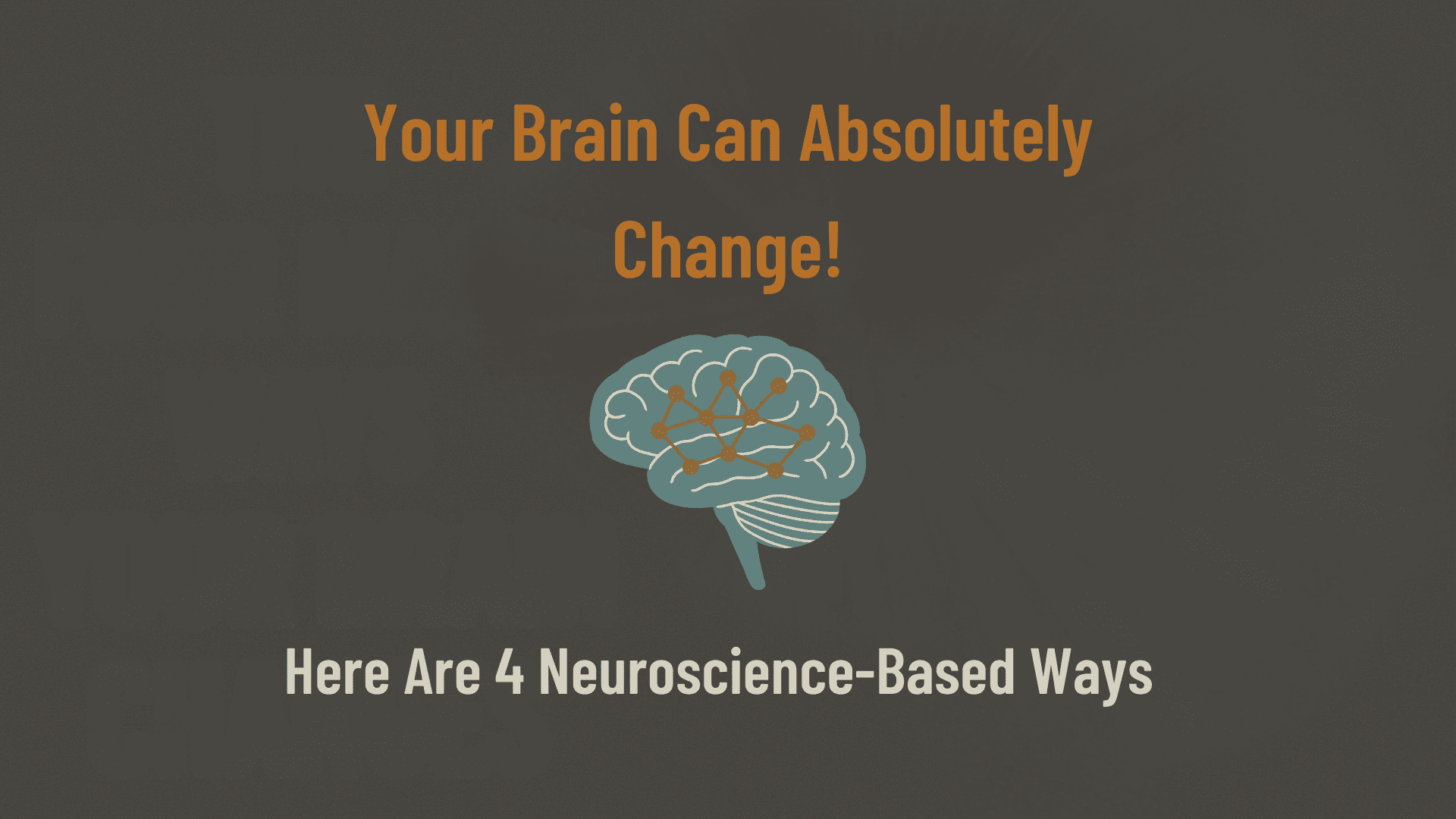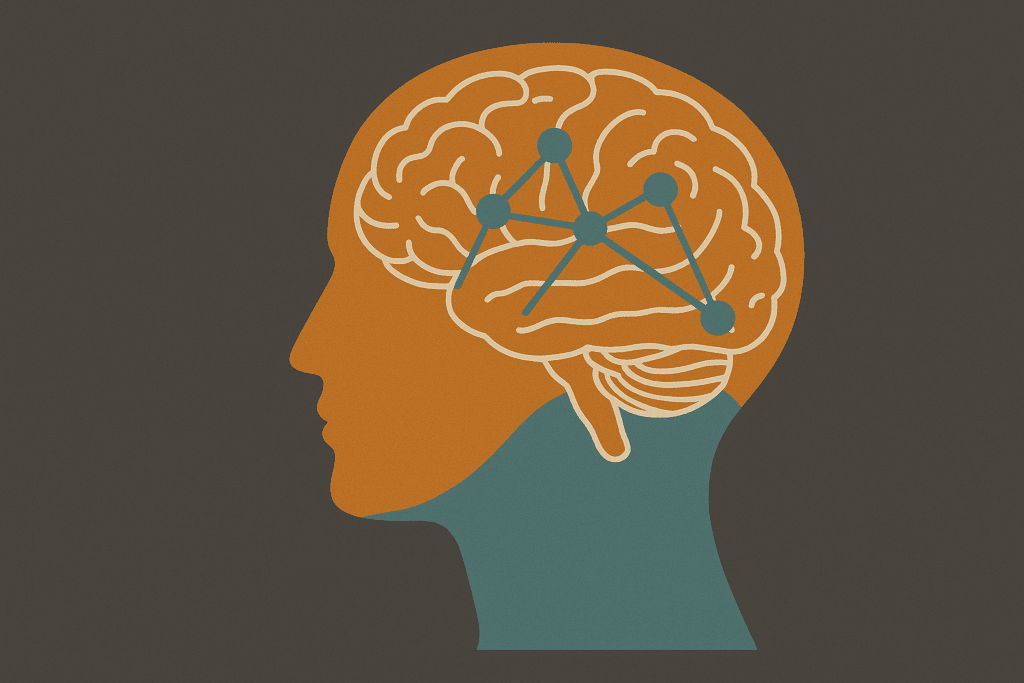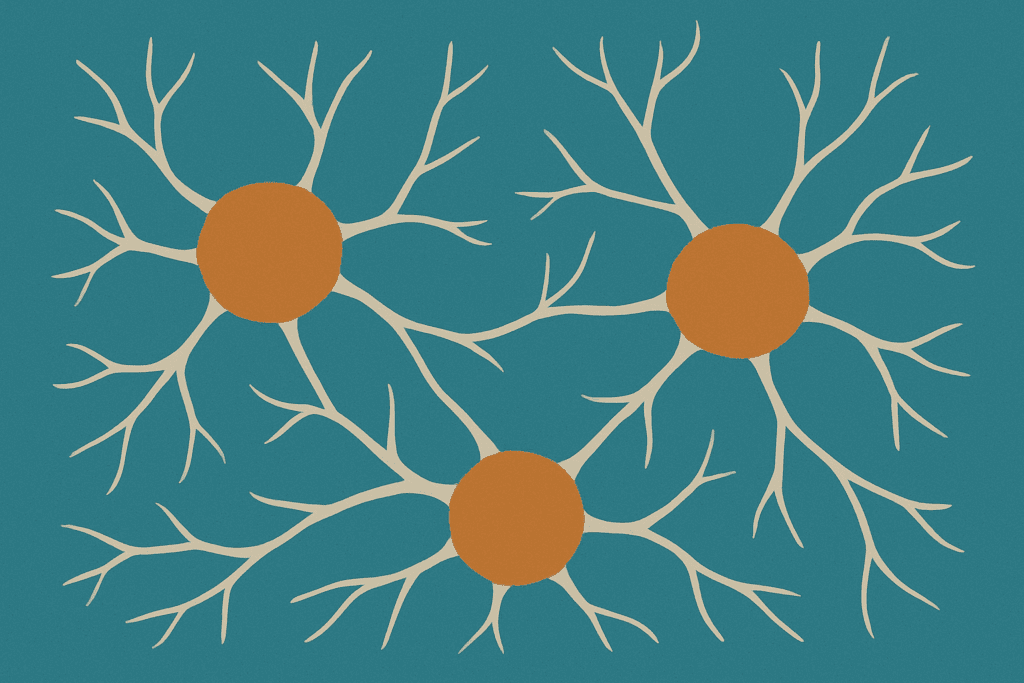Neuroplasticity Works, If You Work It
Your brain is more incredible than you might think. Every single day, your brain has the power to change, grow, and adapt in ways that can transform your entire life. This remarkable ability is known as neuroplasticity, and understanding the science behind it can help you unlock your full potential.
For over 25 years, I have pioneered a neuroscience-based coaching modality that harnesses the power of brain science to help executives and high performers overcome obstacles, reduce stress, and achieve breakthrough results. The science behind neuroplasticity is not just theory. It is the foundation for real, measurable change in how you think, feel, and perform.
What Is Neuroplasticity in Simple Terms
Think of your brain like a massive highway system. Some roads are wide, smooth highways that you travel on every single day. Other roads are narrow, bumpy paths that rarely get used. The science behind neuroplasticity tells us that your brain can actually build new roads, widen existing paths, and even shut down old routes that no longer serve you.
Neuroplasticity is your brain’s natural ability to reorganize itself by forming new connections between brain cells. These connections, called neural pathways, are how information travels through your brain. Every time you learn something new, practice a skill, or even think a repeated thought, you are physically changing your brain.
Scientists used to believe that your brain stopped changing once you became an adult. They thought you were stuck with whatever brain you were born with. However, modern research has completely turned that idea on its head. The science behind neuroplasticity proves that your brain can change at any age, from childhood all the way through your senior years.
How Your Brain Actually Rewires Itself
Understanding the science behind neuroplasticity starts with knowing what happens inside your brain when you learn or experience something new. Your brain contains about 86 billion nerve cells called neurons. These neurons communicate with each other through tiny spaces called synapses.
When you repeat an action, thought, or behavior, the connection between neurons becomes stronger. This process is often described as “neurons that fire together, wire together.” The more you use a particular pathway in your brain, the stronger and faster that pathway becomes.
For example, when you first learned to tie your shoes as a child, it required intense focus and concentration. Your brain was forming new connections and pathways. But after hundreds of repetitions, tying your boots became automatic. Your brain had physically changed through neuroplasticity, making that pathway so strong it no longer required conscious effort.
The science behind neuroplasticity also works in reverse. When you stop using specific neural pathways, they become weaker through a process called synaptic pruning. Your brain clears out the unused connections to make room for more important ones. This is why skills you do not practice regularly can become rusty over time.

The Four Main Ways Your Brain Changes
The science behind neuroplasticity reveals four primary mechanisms through which your brain adapts and transforms.
Synaptic Plasticity is the first mechanism. This involves the strengthening or weakening of connections between neurons. When you practice something repeatedly, the synapses involved in that activity become more efficient at transmitting signals. This is the foundation of all learning and memory formation.
Structural Plasticity happens when your brain actually grows new neurons or forms entirely new connections. For many years, scientists believed adults could not grow new brain cells. Research now shows that neurogenesis, or the birth of new neurons, continues throughout life, particularly in areas like the hippocampus, which is crucial for learning and memory.
Functional Plasticity occurs when different parts of your brain take over functions from damaged areas. This is incredibly important for recovery after brain injuries or strokes. If one area of the brain is damaged, another region can sometimes learn to perform those tasks in its place. This demonstrates just how adaptable and resilient your brain truly is.
Neurochemical Changes involve shifts in the chemicals that help neurons communicate. Neurotransmitters such as dopamine, serotonin, and norepinephrine play crucial roles in regulating mood, motivation, and focus. The science behind neuroplasticity demonstrates that modifying your behaviors and thoughts can actually alter these neurochemical balances, resulting in enhanced mental health and well-being.
Why Neuroplasticity Matters for Your Daily Life
The science behind neuroplasticity is not just interesting information for neuroscientists; it is also relevant to a broader audience. It has profound implications for how you live your life every single day.
When you understand that your brain can change, you realize that you are not stuck with limiting beliefs, negative thought patterns, or unwanted habits. If your brain created these patterns, your brain can also create new, healthier patterns to replace them.
This is where neuroscience-based coaching becomes incredibly powerful. Over the past 25 years, I have witnessed firsthand how applying the science behind neuroplasticity can lead to remarkable transformations. Executives who thought they could never overcome anxiety discovered they could rewire their stress responses. Leaders who felt burned out learned to create new neural pathways for resilience and energy.
The science behind neuroplasticity tells us that every experience you have, every thought you think, and every action you take is literally shaping your brain. This means you have far more control over your mental health, performance, and overall well-being than you might have realized.
Real Life Examples of Brain Plasticity in Action
The science behind neuroplasticity becomes even more powerful when you see how it works in real situations.
Consider stroke recovery. When someone has a stroke, part of their brain is damaged, often resulting in loss of movement or speech. Through intensive rehabilitation that leverages neuroplasticity, many stroke patients regain lost abilities. Their brains create new pathways and recruit other brain regions to take over the functions of damaged areas. This recovery process can take months or years, but it demonstrates the remarkable adaptive capacity built into your brain.
Learning a musical instrument is another beautiful example of the science behind neuroplasticity at work. Brain imaging studies reveal that musicians have brains that are physically different from those of non-musicians. The areas responsible for fine motor control, auditory processing, and memory are significantly larger and more interconnected in people who regularly play instruments. These changes do not happen overnight, but with consistent practice, the brain reshapes itself to support the skill.
Even something as simple as learning to juggle creates measurable changes in brain structure. Studies have shown that after just three months of juggling practice, adults showed increased gray matter in areas of the brain related to visual and motor processing. When they stopped practicing, those changes gradually reversed, highlighting the importance of ongoing engagement to maintain new pathways in the science behind neuroplasticity.
People who lose their vision often develop enhanced abilities in their other senses. The brain regions that typically process visual information are reassigned to process touch or sound instead. This is why some blind individuals can navigate complex environments using sound or develop extraordinary tactile sensitivity for reading Braille. The science behind neuroplasticity enables the brain to optimize its resources in response to actual needs and experiences.

The Connection Between Stress and Brain Plasticity
Understanding the science behind neuroplasticity also means recognizing how stress affects your brain’s ability to change and adapt.
Chronic stress can actually harm neuroplasticity. When you are under constant pressure, your body releases stress hormones, such as cortisol. In small amounts, cortisol is helpful and necessary. However, when cortisol levels remain elevated for prolonged periods, it can damage the hippocampus, the brain region most crucial for forming new memories and learning.
Research indicates that chronic stress can shrink the hippocampus and weaken connections in the prefrontal cortex, the region responsible for decision-making, focus, and emotional regulation. At the same time, stress strengthens connections in the amygdala, the brain’s fear center. This means chronic stress literally rewires your brain to be more anxious and reactive.
However, the science behind neuroplasticity also offers hope. Just as stress can create negative brain changes, intentional practices can create positive changes. When you learn stress reduction techniques and apply them consistently, you can reverse stress-induced brain changes and build resilience.
This is a core component of the neuroscience-based coaching modality I pioneered over 25 years ago. By understanding exactly how stress affects the brain, we can design specific interventions that promote healthy neuroplasticity and restore optimal brain function.
Practical Ways to Boost Your Brain’s Plasticity
The science behind neuroplasticity is most valuable when you can apply it to improve your own life. Here are proven strategies that enhance your brain’s ability to change and grow.
Physical Exercise is one of the most powerful boosters of neuroplasticity available. Aerobic exercise increases blood flow to your brain, stimulates the release of growth factors that help neurons survive and thrive, and promotes the birth of new brain cells. Even moderate activities, such as brisk walking for 30 minutes several times a week, can lead to measurable improvements in brain structure and function. The key to protecting your brain from age-related decline is to maintain cognitive fitness as a daily practice, making intentional choices that strengthen your neural networks and preserve mental sharpness.
Learning New Skills forces your brain to create new pathways and strengthen existing ones. The key is choosing activities that are genuinely novel and challenging. Learning a new language, picking up a musical instrument, mastering a new sport, or developing a complex hobby all activate neuroplasticity. The challenge level matters because your brain changes most when it is pushed just beyond its current comfort zone.
Quality Sleep is absolutely essential for neuroplasticity. During sleep, your brain consolidates new learning, strengthens meaningful connections, and clears away cellular waste products. The science behind neuroplasticity reveals that most neural rewiring actually happens while you sleep, not while you are awake practicing. Without adequate sleep, all your efforts to change your brain will be far less effective.
Mindfulness and Meditation have been shown to create structural changes in the brain. Regular meditation practice can increase gray matter density in areas associated with attention, emotional regulation, and self-awareness. It also reduces activity in the default mode network, the brain regions associated with mind wandering and self-referential thinking. Even brief daily meditation sessions of 10 to 15 minutes can produce measurable results over time.
Social Connection stimulates neuroplasticity in unique ways. Meaningful conversations, collaborative problem solving, and emotional bonding all activate complex neural networks. Isolation and loneliness, on the other hand, can impair brain plasticity and contribute to cognitive decline. The science behind neuroplasticity emphasizes that humans are social creatures, and our brains are designed to change and grow through interactions with others.
Mental challenges, such as puzzles, strategy games, reading complex material, and engaging in thoughtful discussions, all promote neuroplasticity. The key is variety and genuine difficulty. Doing the same easy crossword puzzle every day will not significantly challenge your brain. But tackling increasingly complex problems or learning entirely new types of mental tasks will stimulate significant neural adaptation.
Healthy Nutrition provides the raw materials your brain needs to build and maintain neural connections. Omega-3 fatty acids, found in fish and specific plant sources, are crucial for brain structure and function. Antioxidants from colorful fruits and vegetables protect brain cells from damage. B vitamins support energy production in neurons. The Mediterranean diet, rich in vegetables, healthy fats, and lean proteins, has been linked to improved cognitive function and a reduced risk of dementia.

How Neuroplasticity Helps Mental Health Recovery
Research shows that you can build and sustain cognitive fitness as you age by combining physical activity, mental challenges, quality sleep, and meaningful social connections, all of which work together to optimize your brain’s neuroplastic capacity.
Depression, anxiety, and trauma-related disorders all involve specific patterns of brain activity and connectivity. For many years, these conditions were viewed as permanent chemical imbalances that could only be managed, never truly healed. The science behind neuroplasticity offers a different perspective.
Research shows that depression is associated with reduced neuroplasticity, particularly in the hippocampus and prefrontal cortex. The good news is that effective treatments work by restoring healthy neuroplasticity. Antidepressant medications, therapy, exercise, and other interventions all promote the formation of new neural connections and the strengthening of circuits involved in mood regulation.
Anxiety disorders often involve overactive fear circuits and weakened regulatory pathways. Through techniques like exposure therapy, cognitive restructuring, and mindfulness practices, people can literally rewire these circuits. The amygdala, your brain’s alarm system, can learn to respond less intensely to perceived threats. The prefrontal cortex can strengthen its ability to regulate emotional responses.
This is where my pioneering work in neuroscience-based coaching has made such a profound difference. Rather than simply managing symptoms, we target the underlying neural patterns that create and maintain mental health challenges. By understanding the science behind neuroplasticity, we can design interventions that produce lasting changes at the brain level.
The Role of Repetition and Practice
One of the most important insights from the science behind neuroplasticity is the critical role of repetition.
Your brain does not change from a single experience or a one-time effort. Neuroplasticity requires consistent, repeated activation of the pathways you want to strengthen. This is why building new habits, learning complex skills, or overcoming deeply ingrained patterns takes time and patience.
Think of it like creating a path through a forest. The first time you walk through, you barely make an impression. But if you walk the same route every day, you eventually create a clear, well-worn trail. Your neural pathways work the same way. Each repetition strengthens, speeds up, and makes the path more automatic.
The science behind neuroplasticity also tells us that quality matters as much as quantity. Mindless repetition is far less effective than focused, intentional practice. When you pay attention to what you are doing and actively engage with the learning process, you create more substantial and more lasting neural changes.
This principle applies whether you are trying to develop a new professional skill, establish healthier thought patterns, or recover from an injury. Consistent, focused practice over weeks and months is what drives meaningful neuroplastic change.
Neuroplasticity Across the Lifespan
The science behind neuroplasticity reveals fascinating differences in how brains change at various stages of development.
Children and adolescents have extraordinarily high levels of neuroplasticity. Young brains are designed to absorb information and form new connections at a rapid pace. This is why children learn languages so easily and quickly pick up new skills. Their brains are in a state of almost constant rewiring and refinement.
However, contrary to old beliefs, the adult brain retains significant plasticity throughout life. While certain types of learning may be easier in childhood, adults also have advantages. Adult brains possess existing knowledge, enhanced executive control, and the capacity to engage in more strategic learning approaches.
The science behind neuroplasticity demonstrates that older adults can and do form new neural connections, generate new brain cells, and acquire new skills. The key is staying mentally and physically active, maintaining social connections, and continually challenging the brain with novel experiences.
Age-related cognitive decline is not inevitable. Much of what was previously attributed to normal aging is actually the result of reduced stimulation and engagement. When older adults engage in cognitively demanding activities, physical exercise, and social interaction, they can maintain and even improve their brain function.
Breaking Free from Limiting Patterns
Perhaps the most empowering aspect of the science behind neuroplasticity is its implications for personal transformation.
You are not permanently defined by your past experiences, your current habits, or your existing thought patterns. Your brain created those patterns, and your brain can create new ones.
This does not mean change is easy. Old neural pathways, especially those formed early in life or reinforced thousands of times, have momentum. Your brain defaults to these familiar patterns because they are efficient and automatic. Breaking free requires deliberately creating new pathways and consistently choosing them over the old ones.
Over the past 25 years, I have guided numerous individuals through this process using neuroscience-based coaching. The science behind neuroplasticity provides the roadmap, but the real work requires commitment, consistency, and often support from someone who understands how to facilitate brain-based change.
The process typically involves identifying the specific neural patterns you want to change, understanding what triggers and maintains them, and then designing targeted practices that build new, healthier pathways. Over time, with enough repetition and the right conditions, the new pathways become stronger than the old ones.
The Future of Brain Science and Personal Development
The science behind neuroplasticity continues to evolve, revealing new insights into the brain’s remarkable capacity for change.
Emerging research is investigating ways to enhance neuroplasticity through various interventions. Scientists are studying how specific nutrients, medications, brain stimulation techniques, and even virtual reality experiences might accelerate or optimize neural rewiring.
What we already know, however, is more than enough to transform lives. The fundamental principles of neuroplasticity, combined with practical applications, offer a robust framework for personal and professional growth.
This is why I dedicated my career to pioneering neuroscience-based coaching modalities. Traditional approaches to personal development often ignore the brain science underlying behavior change. By integrating the science behind neuroplasticity into coaching and development programs, we can achieve results that would be impossible otherwise.

Your Brain Is Always Changing
Here is a crucial truth about the science behind neuroplasticity: your brain is changing whether you direct that change or not.
Every experience, every thought, every action is shaping your neural pathways. The question is not whether your brain will change, but instead in what direction it will change.
When you understand the science behind neuroplasticity, you gain the power to consciously direct your brain’s development. You can choose to strengthen pathways that serve your goals, values, and well being. You can deliberately weaken connections that keep you stuck in unhelpful patterns.
This is not about positive thinking or wishful hoping. This is about understanding the biological mechanisms of brain change and applying that knowledge strategically and consistently.
Taking Action on Brain Plasticity
Understanding the science behind neuroplasticity is the first step. The real transformation comes from application.
Begin by identifying one area of your life where you want to make a change. It might be a habit you want to build, a skill you want to develop, or a thought pattern you want to shift. Then, design a specific, consistent practice that targets that change.
Remember that neuroplasticity requires the right conditions to flourish. Ensure you are getting adequate sleep, engaging in regular physical activity, managing stress effectively, and stimulating your brain with novel experiences. These factors create an environment that allows for efficient neural rewiring.
Consider working with someone who understands the science behind neuroplasticity and can guide you through the change process. Having support, accountability, and expert guidance can dramatically accelerate your progress and help you avoid common pitfalls.
The Neuroscience Revolution in Coaching
For more than 25 years, I have been at the forefront of applying the science behind neuroplasticity to executive coaching and personal development. This neuroscience-based approach represents a fundamental shift in how we think about human potential and change.
Traditional coaching often focuses on mindset, motivation, and strategy. While these are valuable, they miss the underlying neural mechanisms that determine whether change actually sticks. When you understand how to work with your brain’s natural plasticity, you can create transformation at a deeper, more lasting level.
The executives and high performers I work with often come to me after other approaches have failed. They understand what they should do, but they struggle to consistently do it. The missing piece is usually an understanding of the science behind neuroplasticity and how to apply it practically.
By targeting specific neural circuits, designing practices that optimize brain change, and creating the proper environmental conditions, we can achieve results in weeks or months that might otherwise take years.
Your Brain’s Incredible Potential
The science behind neuroplasticity reveals a profound truth about human nature: we are far more capable of change and growth than we typically believe.
Your brain is not a fixed computer running predetermined programs. It is a dynamic, adaptable organ that reshapes itself based on how you use it. This means your potential is not limited by your genes, past experiences, or current circumstances.
Whatever challenges you face, whatever goals you pursue, whatever changes you want to make, your brain has the capacity to support that transformation. Understanding the science behind neuroplasticity gives you the knowledge. Applying that knowledge consistently yields the desired results.
The future you want to create starts with the brain changes you make today. Every positive choice, every new skill practiced, every moment of mindful awareness is literally rewiring your neural pathways in the direction of your goals.
This is not motivational hype. This is neuroscience. This is the science behind neuroplasticity in action. And this is the foundation of the transformational work I have dedicated my career to sharing with the world.
Your brain is ready to change. The question is, are you ready to harness that power and direct it toward the life you truly want? The science is clear. The methods are proven. The only thing missing is your decision to begin.
#neuroplasticity #brainscience #neurosciencecoaching #brainplasticity #mentalhealth #cognitivefunction #personaldevelopment #executivecoaching #brainhealth #stressreduction #neuralpathways #learningandmemory



